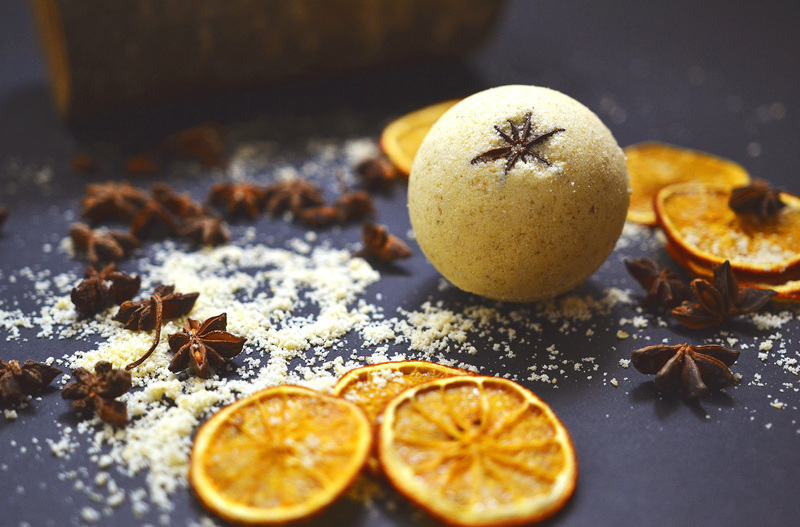From Greasy to Gleaming: Clean Your Enamel Oven Trays Easily
Posted on 07/06/2025
From Greasy to Gleaming: Clean Your Enamel Oven Trays Easily
Enamel oven trays are an essential part of any kitchen, but over time, they can accumulate stubborn grease, burnt-on food, and unsightly stains. A sparkling clean oven tray not only improves your baking results but also extends the life of your kitchenware and keeps your cooking environment hygienic. This comprehensive guide will walk you through the best methods and insider tips to clean your enamel oven trays easily, restoring them from greasy to gleaming with minimal effort.
Why It Is Important to Keep Your Enamel Oven Trays Clean
Cleaning your enamel oven trays regularly is vital for various reasons:
- Improves Food Taste and Safety: Residual grease and burnt food can impart strange odors and flavors to your fresh dishes.
- Promotes Healthy Cooking: Bacterial growth can thrive on dirty surfaces, risking cross-contamination.
- Prolongs Tray Lifespan: Grease and burnt-on residue can cause the enamel coating to deteriorate faster if not removed promptly.
- Saves You Money: Proper care reduces the need to replace trays prematurely.
- Keeps Your Oven in Good Condition: Clean trays help prevent smoke and carbon buildup inside your oven.

Understanding Enamel Oven Trays
Enamel oven trays are coated metal trays, typically made from steel or iron and coated with a smooth, hard, glossy enamel finish. The enamel surface resists most stains and is less likely to rust compared to bare metal. However, it is not immune to burnt food, stubborn grease, and hardened residues. Cleaning enamel oven trays regularly and properly can keep their appearance pristine and their functioning optimum.
Features of Enamel Oven Trays
- Non-reactive Surface: Safe for all types of food, doesn't impart unpleasant flavors or odors.
- Durable: More resistant to scratches and heat than non-enamel coated trays.
- Visually Appealing: The glossy finish gives trays their signature clean, reflective look.
- Easy to Clean: With the right approach, the non-porous surface releases grime with less scrubbing.
Common Challenges When Cleaning Enamel Oven Trays
Despite their easy-clean reputation, enamel oven trays can become challenging to clean after repeated exposure to high heat and greasy foods. Here are the most common cleaning obstacles:
- Stubborn Grease: Caked-on fats can create sticky, hard-to-remove layers.
- Burnt-on Residue: Overflows and spills sometimes carbonize and bond with the enamel surface.
- Staining: Cheeses, sauces, and certain spices can cause color stains if not cleaned promptly.
- Scratching: Using abrasive scouring pads can damage the enamel layer, leading to stains and rust spots.
Preparation: What You'll Need for Cleaning
Before you begin cleaning enamel oven trays, gather the following supplies:
- Baking soda
- White vinegar or lemon juice
- Mild dish soap
- Soft non-abrasive sponge or microfiber cloth
- Plastic or silicone scraper
- Rubber gloves
- Warm water
- Old toothbrush (for hard-to-reach spots)
Step-by-Step: How to Clean Enamel Oven Trays Easily
1. Remove Loose Debris
Start by removing loose bits of food and debris from the enamel tray. Use a paper towel or a soft brush to sweep these into the trash. This initial step prevents unintentional scratching when scrubbing later on.
2. Soak the Tray
Soaking is the easiest way to loosen stubborn grease on enamel oven trays. Fill your sink or a large basin with very warm water and a generous squirt of mild dish soap. Submerge the tray and let it soak for at least 30 minutes. For tough jobs, an overnight soak works wonders. This makes it easy to wipe away grime and prevents you from using harsh abrasives.
3. Apply Baking Soda Paste
If you're still seeing grease or burnt-on stains after soaking, make a simple paste with baking soda and a bit of water. Spread the paste evenly on the trouble spots. Let it sit for 15-30 minutes -- baking soda's mild abrasiveness helps lift stuck-on grime without scratching the enamel surface.
4. Use Vinegar or Lemon Juice for Extra Cleaning Power
For especially tough stains, spray or pour a little white vinegar or lemon juice over the baking soda paste. This will create a fizzing reaction (because of the mild acid), further breaking down residue without damaging the tray. Allow this to sit and bubble for up to 10 minutes, then gently scrub with your sponge.
5. Gentle Scrubbing
Using your non-abrasive sponge or microfiber cloth, scrub the tray in small circular motions. Concentrate on the areas with remaining stains or grease. For corners and grooves, an old soft toothbrush can help dislodge the last of the debris.
Warning: Avoid using steel wool, wire brushes, or any harsh abrasives which can scratch and permanently damage the enamel coating.
6. Rinse and Dry
Finally, rinse the tray thoroughly with clean, hot water. Make sure all soap, baking soda, and vinegar residue is gone. Dry the tray completely with a clean dish towel or allow it to air dry. This prevents water spots and helps avoid future rust forming on any exposed edges.
Alternative Methods for Deep Cleaning Enamel Oven Trays
Sometimes, regular cleaning isn't enough for trays that have seen months or even years of heavy use. When you encounter stubborn, baked-on stains, try these alternative cleaning methods:
1. Dishwasher (If Suitable)
Some enamel trays are dishwasher safe. Place your tray on the top rack and run on a heavy-duty cycle. Be sure to check the manufacturer's guidelines to ensure safety in the dishwasher, as high heat or aggressive cycles may weaken some enamel finishes over time.
2. Commercial Oven Cleaners
If home remedies aren't getting the job done, commercial oven cleaners can offer a powerful solution. Use these products with caution:
- Read the label to ensure it's suitable for enamel surfaces.
- Always wear gloves and work in a well-ventilated area.
- Never mix commercial cleaners with other chemicals like bleach or ammonia.
- Follow the product instructions precisely and rinse the tray thoroughly after use.
3. Enzyme-Based Cleaners
Eco-friendly enzyme cleaners can break down organic matter, making them ideal for removing cooked-on fats and food residues without harsh chemicals. Spray the cleaner generously and let it sit for the recommended time before wiping the tray clean.
4. Boil and Simmer Approach
If you have a large enough pot, you can submerge enamel trays in gently simmering water with a few tablespoons of baking soda. Allow the tray to simmer for 10-15 minutes to help soften burned-on messes. Let it cool before scrubbing with a soft sponge.
Preventative Tips: Keep Your Enamel Oven Trays Gleaming
- Use Baking Paper or Foil Liners: Line trays when roasting or baking sticky items. This prevents direct contact with the enamel and drastically simplifies cleanup.
- Clean After Each Use: The sooner you clean, the less likely stains or deposits will set and harden.
- Avoid Abrasive Tools: Always use soft sponges or cloths to scrub the surface.
- Avoid Drastic Temperature Changes: Let trays cool before washing to prevent thermal shock and potential enamel cracking.
- Store Properly: Keep trays dry and stacked with care to avoid chipping the edges.
- Do Not Use Bleach: This can discolor and weaken the enamel coating.

Frequently Asked Questions on Cleaning Enamel Oven Trays
Can I use steel wool on enamel oven trays?
No. Steel wool, wire brushes, or other abrasive scrubbers can scratch and damage the enamel coating, leading to rust and harder-to-clean surfaces. Always stick to non-abrasive sponges and cloths.
What if there are persistent black stains?
For persistent black stains, repeated applications of baking soda paste and vinegar usually break them down. Commercial products labeled as safe for enamel can also help, but avoid anything that lists abrasives as a main ingredient.
Are there natural alternatives for deep cleaning?
Yes! Besides baking soda and vinegar, lemon juice and salt can form a paste that works well for scrubbing difficult areas. Just remember to rinse thoroughly after using these agents.
How often should I clean my enamel oven trays?
Ideally, wipe down your trays after every use, and perform deeper cleanings (like overnight soaking) once a month or as needed to keep them in top condition.
My enamel tray is chipped. Is it safe to continue using?
Small chips can occur, but exposed metal means the tray could rust and may not be safe for food. Replace trays with significant chips in cooking surfaces to avoid contamination or further damage.
Conclusion: Enjoy a Spotless Bake Every Time
Restoring your enamel oven trays from greasy to gleaming is surprisingly straightforward with the right approach and supplies. By soaking, using gentle cleaning agents like baking soda and vinegar, and avoiding harsh abrasives, you can keep your enamel oven trays looking brand new for years to come.
With these simple cleaning techniques, you'll not only improve the look of your kitchen but also the quality and taste of your home-cooked meals. Remember: regular care is key. Clean your enamel oven trays easily and enjoy the satisfaction of a spotless bake every time you use your oven!
Have a gleaming tray tip or question? Share your experience in the comments and help others on their journey from greasy to gleaming!
```



